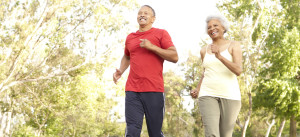Fall prevention key to avoiding injury
December 6, 2018

Originally published by Baylor College of Medicine
In sports it’s said that the best offense is a good defense, and that can be true for falls too – the best way to prevent an injury is to avoid the fall altogether. Two orthopedic surgeons in the Joseph Barnhart Department of Orthopedic Surgery at Baylor College of Medicine who specialize in trauma discuss common injuries that can occur when people fall and offer prevention tips.
“Really what you think of with falls is hip fractures, but that’s just a small part of it,” said Dr. John Dawson, assistant professor of orthopedic surgery at Baylor and chief of orthopedic surgery at Harris Health System’s Ben Taub Hospital. “You see fractures around the knee, fractures of the shoulder, fractures of the wrist and elbow. All of these can be disabling. For the elderly or for patients with limited mobility who rely on use of their arms to get out a chair, for example, a shoulder fracture can make them almost wheelchair bound. Hip and knee fractures really can slow a patient down tremendously.”
Older Adults
For adults over the age of 55, there are many normal age-related changes that can contribute to falls, according to Dr. Chris Perkins, assistant professor of orthopedic surgery at Baylor.
Changes in eyesight and medication dosage can be factors. Because bone quality is not the same as we get older, it also can be a major factor. Common areas where fractures occur are hips, shoulders and wrists, as well as around the knee or down the ankle because these areas are where the bone is weak.
One of the most common areas that people fall is around the bathroom because of loose rugs or wet floors. When the proper assistive devices or railings are not in place, falls occur while getting in and out of the bathtub or getting on and off the toilet.
“Once you have a fracture, your risk of having another fracture is higher,” Dawson said. “Typically after any kind of fracture you have a period of inactivity. You get weaker, more deconditioned, your bone quality gets worse and you become hesitant to do activities that you previously did assuredly, which puts you at a high risk of falling.”
Dawson and Perkins suggest taking advantage of fall prevention programs available through community centers, where the focus is to keep you active and confident in your ability to move around your house. They also can make home visits to assess potential risks and give recommendations, such as putting up assistive rails in the restroom or identifying changes in flooring that increase risk for falls.
Another important part of fall prevention is to review medications to ensure correct dosages and to make sure medications do not have interactions with one another.
As fracture specialists, Dawson and Perkins take care of a good number of geriatric fractures, with the goal of getting the patient walking within 24 hours of the procedure.
“We think about it less as treatment of the fracture and more of treatment of the whole patient. If you spend a few days in bed immediately after a fracture, that may translate to weeks longer to recover,” Dawson said. “I generally counsel a patient that after any injury, it takes a long time to get back to the level that you were at, and there’s a large percentage of patients that don’t quite get back to their previous level of activity. It’s important for families and patients to manage expectations and not be disappointed if the process is long and difficult, because at times it is.”
Younger Adults
In younger adults, keeping your bones healthy is the most important factor in preventing injuries from falls. Many younger adults are vitamin D deficient or insufficient, so taking calcium and vitamin D supplementation or drinking plenty of milk is important.
“Your bone mass peaks when you’re in your late 20s so basically from then on, it’s a matter of how quickly you lose the bone,” said Dawson. “And the higher you start, the greater your bone mass will be later in life.”
Being physically fit, and doing exercises that promote balance, core strengthening and stretching are good ways to help prevent injuries, said Perkins.
Category: Falls Prevention, Adding Quality to Later Life Years, News